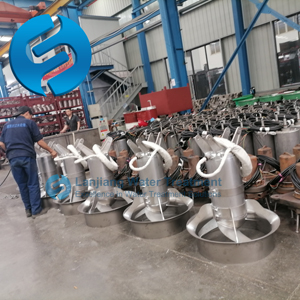First, the treatment capacity of sewage treatment equipment
1. Define
The treatment capacity of sewage treatment equipment refers to the maximum amount of sewage that the equipment can treat in a unit time, usually expressed in the amount of sewage treated per day (unit: m³/d). It is one of the important indicators to measure the performance of sewage treatment equipment, which is directly related to whether the equipment can meet the needs of sewage treatment in specific scenarios.
2. Calculation method
The capacity of sewage treatment equipment can be estimated or calculated in a variety of ways, but the specific method may vary depending on the type of equipment, application scenarios and design standards. Generally speaking, it can be estimated based on the design population, daily domestic sewage discharge per unit population, daily sewage discharge coefficient and other parameters, combined with the calculation formula of sewage flow (such as Q=A×Qp×Qd, where Q represents sewage discharge, A represents design population, Qp represents daily domestic sewage discharge per unit population, Qd represents daily sewage discharge coefficient). In addition, it is also necessary to consider the residence time of sewage in the equipment, treatment efficiency and other factors to comprehensively determine the treatment capacity of the equipment.

3. Influencing factors
The capacity of sewage treatment equipment is affected by many factors, mainly including:
Design standards: Design standards issued by relevant national or local departments, such as emission standards, water quality requirements, etc., will directly affect the determination of equipment processing capacity.
Operating costs: The larger the processing capacity, usually means that the larger the size of the equipment, operating costs (such as equipment maintenance costs, electricity costs, labor costs, etc.) will also increase accordingly.
Management requirements: Large processing facilities need to be equipped with professional management teams, and management costs will increase, so management requirements are also one of the factors affecting processing capacity.
Population size and level of industrial development: The larger the population size or the higher the level of industrial development, the larger the sewage discharge is usually, and the demand for treatment capacity is correspondingly increased.
Site conditions: The space size of the installation location, terrain, and geological conditions also affect the selection of equipment processing capacity.
Second, different types of sewage treatment equipment treatment capacity differences
Different types of sewage treatment equipment have significant differences in treatment capacity. Generally speaking, it can be divided into the following categories:
Small-scale domestic sewage treatment equipment: compact design, modular structure, suitable for outdoor, remote areas or small communities with small populations. The processing capacity of this type of equipment is relatively small, but it is flexible and suitable for small-scale sewage treatment needs.
Medium-sized domestic sewage treatment equipment: combined with a certain modular design, suitable for small and medium-sized communities, industrial parks and other scenarios. This type of equipment has a large processing capacity and can adapt to the needs of medium-sized sewage treatment.
Large-scale domestic sewage treatment equipment: usually adopts centralized design, including complex treatment processes and systems. This type of equipment has large processing capacity and is suitable for large-scale water use scenarios such as cities and large industrial zones. They are able to efficiently treat large amounts of sewage and meet stringent discharge standards.
Third, how to choose the sewage treatment equipment suitable for the treatment capacity
When selecting the sewage treatment equipment suitable for the treatment capacity, the following factors should be considered comprehensively:
1. Actual requirements: Determine the water quantity and water quality requirements based on actual requirements to ensure that the device can meet the requirements of actual application scenarios. Consider the scale of residential or industrial water use and future growth trends.
2. Emission standards: Check and confirm local environmental regulations and emission standards to ensure that the selected equipment can achieve the prescribed treatment effect.
3. Site conditions: Evaluate the space size, terrain and geological conditions of the installation location, and select the appropriate equipment type and installation method (above-ground installation or underground buried).
4. Operating costs: Consider the costs of the equipment in the operation process (such as power costs, maintenance costs, etc.), choose an economical and reasonable equipment capacity to reduce long-term operating costs.
5. Technology and service: Select equipment with mature technology and stable performance, and consider the after-sales service and technical support capabilities provided by suppliers.
6. Sustainability and upgrade potential: Investigate the energy efficiency of the equipment, resource recovery capacity and the possibility of future technological upgrading to ensure that the equipment can meet the needs of future development.
To sum up, the selection of the appropriate sewage treatment equipment treatment capacity needs to consider many factors to ensure that the equipment can meet the actual needs and achieve efficient operation.
Post time:2024-09-09